This room contains the objects described below, which come from the region around Perugia, as well as a large collection of grave goods from the Necropoles of Perugia.
Iron Age sword (ca. 8th century BC)

This magnificent weapon was found in 1926 at Fontivegge (near the railway station of Perugia).
Stele from Monte Gualandro (ca. 600 BC)
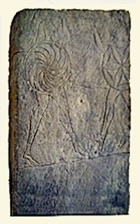
This stele is related to another (late 7th century) from the Etruscan city of Vetulonia that is now in the Museo Archeologico Isidoro Falchi. This second stele depicts a single warrior , similarly naked behind a circular shield but armed with a double-headed axe and wearing a Greek helmet. It contains one of the earliest surviving Etruscan funerary inscriptions, which identifies the deceased as Avele Feluske, son of Tusnute and [...]panalas. It also identifies the donor as "hirumina phersnalas", which might mean Hirumina of Perugia.
These stele are also discussed in the page on Early Etruscan Inscriptions.
Architectural Terracottas (6th -1st centuries BC)
The following are exhibited in showcase 15
Antefix of a Maenad 6th century BC)
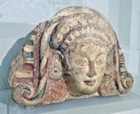
Antefix of Silenus (4th century BC)
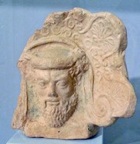
Finds from Viale Indipendenza (ca. 100 BC)
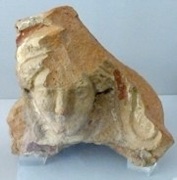
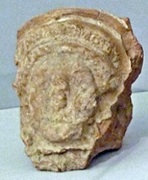
These exhibits, a tile with the relief of a marine monster and two antefixes of maenads (illustrated here), suggest the presence of a temple in Viale Indipendenza (ex Viale Carlo Alberto).
Statue of a God (ca. 100 BC)

Return to the page on exhibits in this room from the Necropoles of Perusia.
Leave the room by the opening on the left at the far end, into the parallel room, which I have designated as Etruscan and Roman Perugia II.
Return to the main page on the Museo Archeologico.



